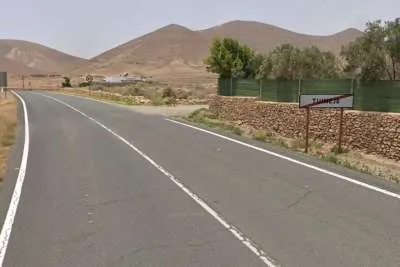How European Students Use Social Media to Influence Education Policy
- 19-04-2025
- Business
- Canarian Weekly
- Photo Credit: Medium
In the digital age, youth have moved beyond the classroom and into the cloud to make their voices heard. Across Europe, students are no longer confined to physical protests or handwritten petitions to express dissatisfaction or propose change. Social media has become the new political arena where ideas are debated, demands are made, and policy shifts are initiated.
Whether it's pushing for climate education reform or protesting tuition hikes, European students are transforming the way education policy is influenced—one post, hashtag, and livestream at a time.
THE EVOLUTION OF STUDENT ACTIVISM IN EUROPE
From Streets to Screens
Historically, European student activism has been deeply rooted in mass demonstrations, occupying university buildings, and forming unions. The 1968 student protests in France, the Bologna Process debates, and the UK’s 2010 tuition fee marches were all traditional manifestations of student discontent.
However, with digital literacy rising and smartphone access nearly universal, student advocacy has shifted from megaphones in town squares to tweets, reels, and viral threads.
Digital Activism as a Continuation of Political Tradition
Far from replacing traditional forms of protest, social media activism has expanded and modernised student engagement. Social media serves as an accelerant, mobilising supporters quickly, disseminating information in real time, and generating momentum that often spills into physical demonstrations or direct lobbying.
POPULAR PLATFORMS AND THEIR ROLES
Twitter/X: The Pulse of Policy Debates
Twitter remains a vital tool for education-related discourse. Students use it to start hashtags, tag education ministers, and live comment on parliamentary sessions. In countries like Germany and the Netherlands, student-led Twitter storms have put pressure on officials during critical decision-making moments.
Instagram and TikTok: Visual Campaigns with Viral Power
Instagram and TikTok are now key to storytelling. Students record video testimonies, share infographic slides, and use trending sounds to express frustration or introduce new ideas. These platforms provide emotional resonance and relatability, helping student-led campaigns reach beyond activist circles to engage the general public.
Facebook and LinkedIn: Spaces for Organised Dialogue
Facebook groups remain vibrant hubs for national student unions and grassroots education reform movements, facilitating real-time discussions and mobilisation. Meanwhile, LinkedIn has emerged as a professional space where student leaders share policy critiques, publish open letters, and voice data-driven perspectives, often catching the attention of educators, researchers, and policymakers alike.
According to Inside Higher Ed, student advocacy on platforms like LinkedIn is becoming increasingly influential in shaping academic discourse and institutional decisions (Inside Higher Ed, 2023).
YouTube and Podcasts: Long-Form Advocacy and Interviews
YouTube is home to documentary-style breakdowns of education policies, while student podcasts offer in-depth interviews with experts and fellow students. These formats allow activists to go beyond slogans, providing historical context, legal insights, and policy alternatives.
METHODS OF INFLUENCE
Hashtag Campaigns and Online Petitions
Hashtag campaigns often kick off widespread movements. For example, #SaveOurGrades and #StudentsDeserveBetter have trended across the UK and Ireland. Online petitions hosted on platforms like Change.org gather hundreds of thousands of signatures, which are later used in direct negotiations with education departments.
Influencer Collaboration and Peer Mobilisation
Student activists often collaborate with social media influencers, sometimes even teachers or celebrities, to amplify messages. Through shared posts and live events, campaigns gain broader visibility. This type of cross-network engagement builds legitimacy and widens support beyond student communities.
Educational Memes and Satirical Commentary
Memes aren’t just jokes; they’re cultural weapons. Satirical content targeting bureaucratic inefficiency or policy contradictions spreads quickly and raises awareness among students who might not follow traditional news sources. These memes make complex issues digestible and emotionally engaging.
Live Q&A Sessions and Virtual Town Halls
Student unions and independent activists now host Instagram Lives, Twitter Spaces, and Facebook video calls where students can engage directly with policymakers. These formats simulate the town hall experience, but with far wider accessibility and immediate feedback loops.
Going Viral with Purpose: Tactical Digital Pressure
Students strategically time posts to coincide with national exams, education budget releases, or ministerial announcements. Viral posts during these moments create digital pressure that forces media coverage and compels politicians to respond.
CASE STUDIES FROM ACROSS EUROPE
France: Resistance to University Reforms
During Macron’s proposed reforms to higher education, French students launched coordinated Instagram campaigns, flooded education ministry posts with critical comments, and shared personal stories through video snippets. These efforts helped revive public debate and slowed down some reforms.
Germany: Demanding Curriculum Changes for Climate Education
In Germany, the student-led Fridays for Future movement effectively harnessed the power of Twitter and Instagram to advocate for the inclusion of climate education in school curricula. Through their #KlimaBildungJetzt (“Climate Education Now”) campaign, they sparked national media coverage and influenced regional education reforms. The movement also highlighted the broader role of educational services and writing services in supporting student activism, helping young advocates craft persuasive messages, proposals, and educational materials that could drive real policy changes.
United Kingdom: Fighting Tuition Hikes and Exam Injustice
During the COVID-19 pandemic, UK students protested against exam algorithm errors and tuition fee policies using hashtags like #JusticeForStudents. TikTok videos showing unfair grading scenarios and inaccessible online classes garnered millions of views, ultimately prompting ministerial apologies and grading policy reviews.
Nordic Countries: Advocating Mental Health and Digital Learning Equity
In Sweden and Finland, students highlighted gaps in digital learning access and rising mental health issues during school closures. Their advocacy on Facebook and Twitter influenced national strategies for student well-being and prompted the inclusion of youth voices in policy design.
IMPACTS ON EDUCATION POLICY AND PUBLIC DISCOURSE
From Noise to Negotiation
Successful social media campaigns have led to tangible policy responses. In several instances, ministries have reversed decisions, revised budget allocations, or opened consultation forums after student-led digital pressure.
Increased Visibility and Policy Inclusion
Social media visibility has forced media outlets to give student concerns more space. Education journalists now monitor student accounts for stories. In turn, governments have started inviting student representatives to panels and consultations more regularly.
Civic Participation and Policy Literacy
Digital campaigns have unintentionally educated students about the policymaking process itself. As they post and engage, they learn about legislative cycles, budgeting, and ministerial responsibilities, fostering a more civically engaged youth population.
CHALLENGES AND CRITICISMS
Digital Divide and Access Issues
Not all students benefit equally from digital activism. Students in rural areas or those without stable internet access remain underrepresented. This digital divide often reflects deeper socioeconomic gaps, reinforcing inequities.
Performative Activism and Misinformation
Critics warn against performative activism, when students share posts without engaging deeply with the cause. Additionally, misinformation can spread rapidly, especially when nuanced policies are reduced to emotionally charged soundbites or memes.
Harassment and Burnout
Activists, especially young women and LGBTQ+ students, often face online harassment. Constant engagement with emotionally heavy content can also lead to activist burnout, especially when policy changes are slow or symbolic.
Resistance from Institutions
Despite growing online movements, many education ministries remain wary of treating social media as a legitimate advocacy tool. Some institutions view online dissent as undisciplined or superficial, leading to friction between digital activists and policymakers.
FUTURE PROSPECTS
Embedding Digital Civic Education in Schools
To maximise the impact of social media advocacy, digital civic education should be embedded into school curricula. Students need tools to engage constructively, verify information, and participate ethically in online movements.
Partnerships with Institutions and NGOs
More formal partnerships between student organisations, EU education agencies, and NGOs can institutionalise student voices in policymaking. Social media can serve as the bridge for these collaborations.
Crowdsourcing Ideas for Reform
Future education policy could incorporate participatory design through online polls, open calls for suggestions, and student-led digital think tanks. Policymakers who treat students as co-creators rather than recipients will foster stronger educational systems.
Strengthening Long-Term Movements
Beyond flash-in-the-pan campaigns, students must learn to build sustained digital advocacy. Training in campaign management, digital security, and cross-platform coordination can make youth-led movements more resilient and impactful.
Conclusion
Social media has redefined student activism across Europe. It allows students to rapidly mobilise, communicate directly with policymakers, and influence education policy at both national and regional levels. While digital advocacy presents challenges, from misinformation to burnout, it also offers unprecedented opportunities for inclusive, impactful, and democratic participation.
As students continue to shape the future of education through tweets, reels, and livestreams, one thing is clear: the classroom now extends far beyond four walls and into the global digital public square.


























































